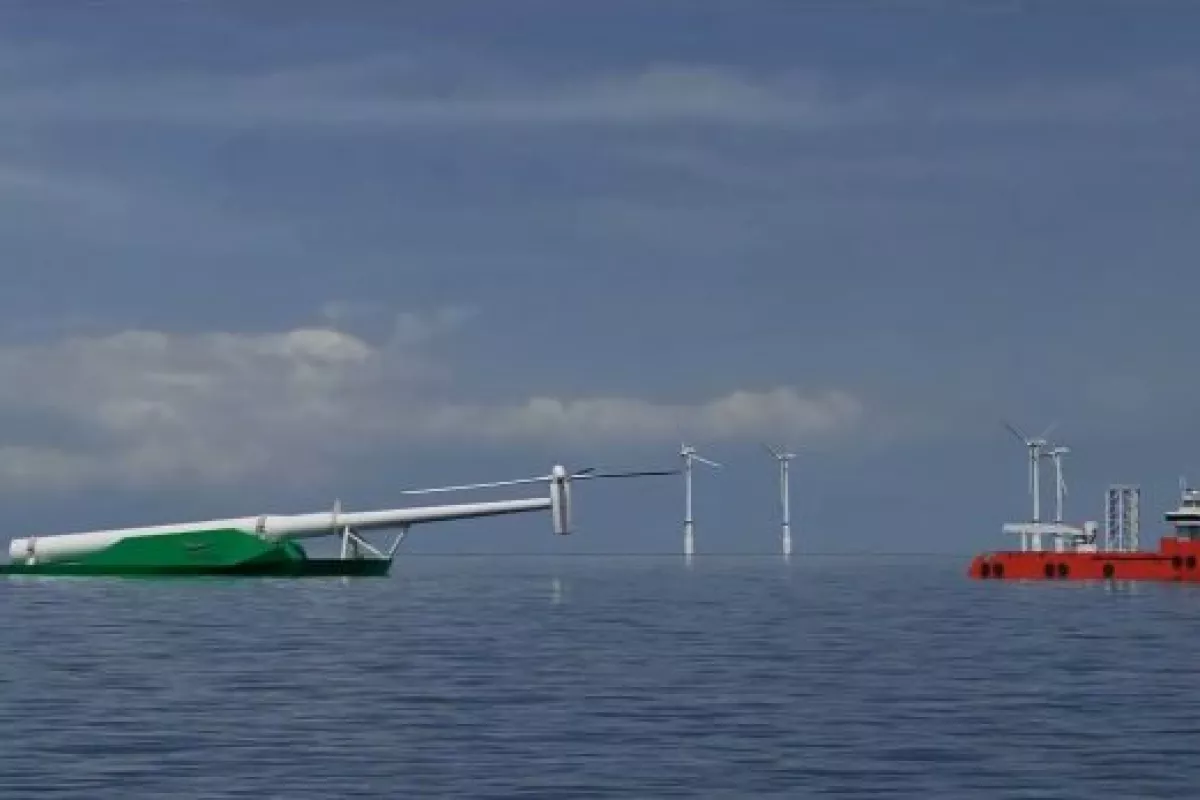While large offshore turbines can be very effective at harnessing the power of the wind, they do pose at least one challenge - how do you get them out into the ocean? One option is to bring them to their deployment site on board a ship, partially assembled, then put them together on location. Doing that kind of work on the pitching deck of a ship can be challenging, however, and requires crews to stay out at sea longer. Another option involves towing them from shore in their final, vertical orientation, but this requires an uninterrupted channel of deep water, and limits the speed at which they can be transported. Now, Norwegian company WindFlip is developing an alternative method that can accommodate shallow water, while allowing for relatively high transport speeds and a minimum amount of time spent putting the turbines in place.
At the heart of the WindFlip system are custom-designed 100 by 30-meter (300 by 90-foot) barges, which are towed behind conventional tugboats. A completely-assembled turbine can be loaded horizontally onto the deck cargo cradle of one of these barges, then towed at speeds of up to 8 knots (14.8 km/h or about 8 mph).
Once at the general location, a series of 29 ballast tanks within the barge start to fill with water, causing it to gradually sink stern-first into the water. This continues until the barge and the attached turbine have flipped 90 degrees, so that the turbine is sitting in its working, upright state. The turbine is then released from the barge and towed into its exact desired location by the tugboat, where it is secured in place using a pre-installed mooring system.

The barge, meanwhile, uses compressed air to blow the water out of its ballast tanks. This allows it to return to its normal horizontal orientation, so it can be towed back to shore and reused.
Currently, the WindFlip system is still a concept. However, its designers are reportedly working with Norway's Statoil, to optimize the system for use with that company's HyWind floating turbines.
The video below illustrates how the system would work.
Source: Clean Technica





